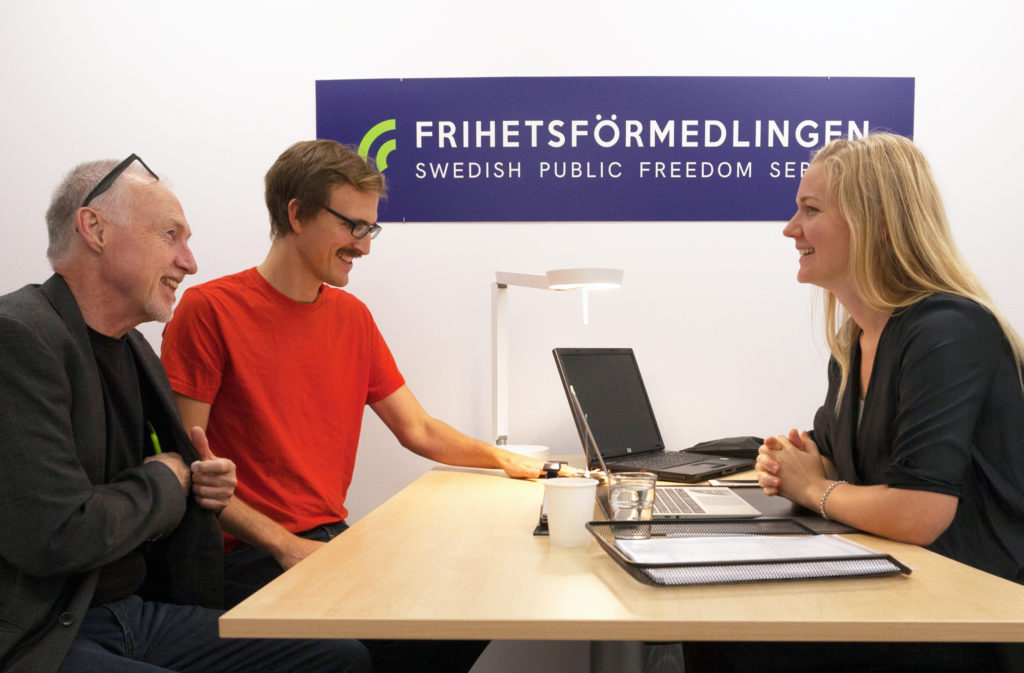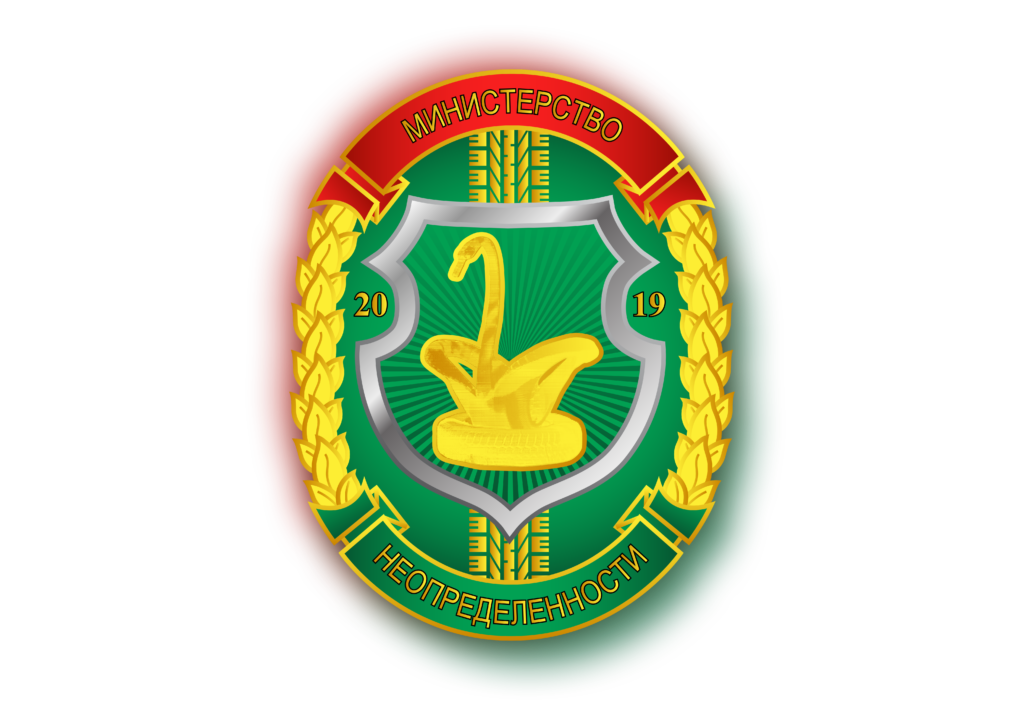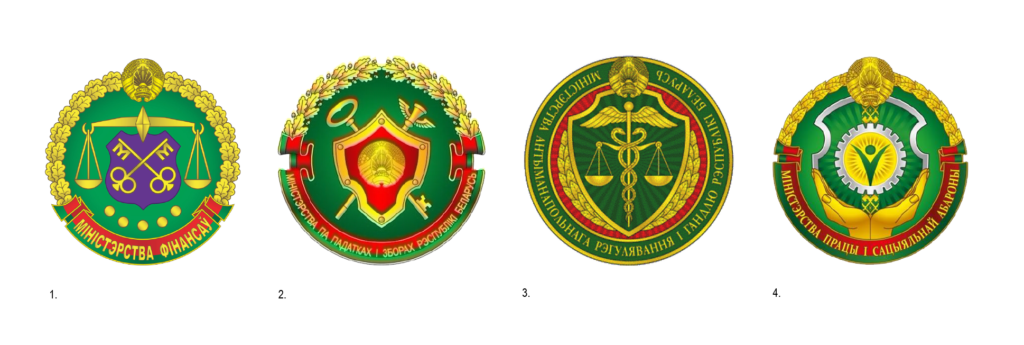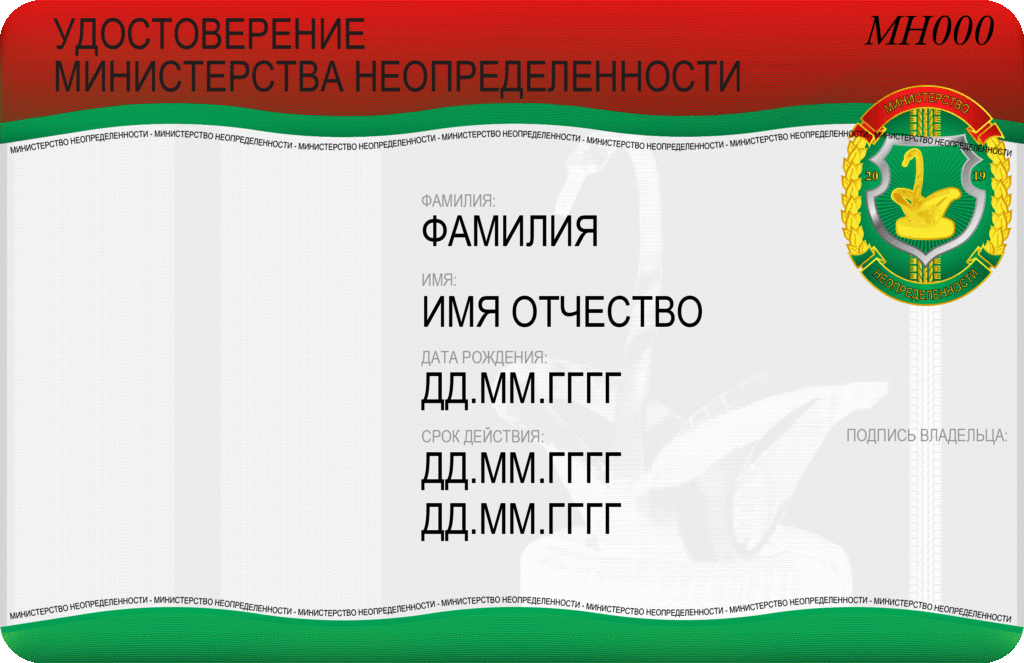DESIGNING THE PARALLEL SOCIETY IN BELARUS: ADDRESSING THE DICHOTOMY OF STABILITY AND UNCERTAINTY
1/24/2020
The results of a STATUS workshop
Intro
This text responds to the results of the workshop of the STATUS project, Designing the Parallel Society, which was led by two Swedish artists John Huntington and Lars Noväng. The workshop took place in Minsk on 6th and 7th of June, 2019. The workshop used the artistic strategy of creating an imaginary, alternative institution. The coaches, Huntington and Noväng, used a game method called ‘reverse engineering’. This method is based on the idea that new, imaginary institutions exist even before they function as such. A team of two tutors and four participants spent two days developing various strategies for the alternative institutions in Belarus and discussing their political and artistic potential.
The following text is structured according to the flow of the workshop. We invite you to follow all the stages of designing a parallel society just as the participants did. In the first part of this text, we will elaborate on the idea of designing a parallel society and Huntington Noväng’s experience with the alternative institution they created several years ago in Sweden – Frihetsförmedlingen (Swedish Public Freedom Service). The next step would be to share with the reader the results of the brainstorming that was a part of the workshop. The aim of this brainstorming was to recognize the problematic aspects of public institutions in Belarus and to find a way to ‘mirror’ them by creating an imaginary institution. Our team focused on the Ministry of Culture and the KGB. We used these institutions as a framework to define a wider problem within Belarusian society – a society that is defined by President Lukashenka’s campaigning and ruling slogan of stability.1 Thus, the third part of the essay describes the concept of an alternative institution as developed within the workshop – the Ministry of Uncertainty. The Ministry of Uncertainty is a prototype for an imaginary institution, an institution that would balance the dichotomy of stability and uncertainty in Belarusian society.

Designing the Parallel Society
Firstly, we have to elaborate on our inspiration. John Huntington and Lars Noväng are Swedish artists who were invited to make the workshop in Minsk within the STATUS program, as they run a project called Frihetsförmedlingen (Swedish Public Freedom Service). Frihetsförmedlingen is an alternative institution. This means that while it mirrors the functions of real state-authorities it aims to criticize the current order of things. This is how Noväng explains the idea behind their project:
We wanted to address a general obsession with work as the meaning of life, as well as a civic obligation. Because of this belief system, countless unnecessary jobs are being created today, while unemployed people are put in “correctional” programs, designed to both discipline and stigmatize them. This is both violent and unsustainable, and a fundamental cause for today’s sky-rocketing frequency of stress-related illnesses in the population. Frihetsförmedlingen is a critique of the society of labor. When we started the project we decided to fill a societal gap by initiating an institution that takes the notion of freedom just as seriously as the Swedish Public Employment Service takes the notion of work. Make freedom obligatory, so to speak.
An alternative institution, as well as the process of designing the parallel society, could be classified as an artistic practice or artistic activism. It works well, as it plays with the rigid mindsets of people. Huntington says:
Setting up something very different from everyday life, where the form is highly familiar but the content is replaced. A participant or an observer of such an alternative institution might become both confused and amused, but this is a starting point to reevaluate the existing institutions. When you experience an alternative institution, you are able to rethink the norm.
This approach perhaps is not the best, but it is a way to initiate social transformations. It’s beneficial, as it invites co-creation. It is not a mere discontent with one’s environment, it is an attempt to provoke critical thinking. “Tweaking mainstream reality enables us to detect hidden myths and ideologies that are embedded in our everyday behaviour,” says Noväng. “This is why I think this strategy makes room for more profound change, compared to if we criticize something and propose solutions, because then we also silently accept the prevailing paradigm.”

Swedish Public Freedom Service (Frihetsförmedlingen) at Varbergs konsthall / Photo: Frihetsförmedlingen 
Swedish Public Freedom Service (Frihetsförmedlingen) / Photo: Per-Arne Sträng 
Swedish Public Freedom Service (Frihetsförmedlingen) / Photo: Frihetsförmedlingen 
Sweden’s Freest Bureaucrat Cecilia Jonasson / Photo: Frihetsförmedlingen 
Swedish Public Freedom Service (Frihetsförmedlingen) outside Gekås in Ullared / Photo: Anna Lo Huntington 
The Freedom Inspection / Photo: Frihetsförmedlingen
These ideas and experience of Frihetsförmedlingen have become a starting point for considering how we can apply the Swedish experience to the Belarusian reality. Our workshop team of John Huntington and Lars Noväng, Christin Wahlström Eriksson, Alina Dzeravianka, Elisabeth Kovtiak, and Sophia Sadovskaya came up with a concept of an alternative institution called the Ministry of Uncertainty. The subsequent parts of the text would unbox the idea.
The road to uncertainty: brainstorming to define problematic aspects
We started by brainstorming to detect faulty and problematic institutions. As in our working group, there were mostly artists and cultural managers; we placed our focus on public institutions that work in cultural and social domains. It’s very important to describe in the beginning of the text all the ideas that emerged from our discussion, as our final concept was the culmination of all of these ideas rather than a project that departed from them. Thus, it’s crucial to know all the problematic points we marked in order to understand properly the very idea of the Ministry of Uncertainty – the concept of an alternative institution we designed during the workshop.
When the tutors asked us to think about a problematic institution, the first thing that popped up in our heads was the Ministry of Culture. Among the participants were artists, curators, and cultural managers; it’s no wonder that our most traumatic professional experiences were connected to the Ministry of Culture. Oddly, it doesn’t matter whether you work for a state art institution or a private one — the Ministry of Culture is a nuisance for both sides. As the Ministry of Culture puts loads of restrictions on artists and curators, we thought of mirroring their activity by creating the Ministry of Unculture (Ministerstvo Beskulturia) to promote artistic vandalism, disobedience, and freedom of expression.
Furthermore, we drew our attention to a problem which is well-known both inside and outside the country: the KGB and its notorious activities. In Belarus, by the KGB we mean the same thing that existed in the USSR. Nowadays, the KGB has become a source of inspiration to exoticization and create nostalgia for Western popular culture. Whilst in all other post-Soviet countries where the former KGB exists under new names and declares itself more democratic and humane, the Belarusian Committee of State Security has kept the same name, structure, mission, and staff.
We wanted to design a parallel institution opposite to the KGB. How could one mirror an institution that keeps the secret files about basically everyone in the country and that also records conversations of citizens in order to exploit them later?2 Perhaps, by doing the same but to the government rather than its citizens and making the collected data available to the general public. Ironically, the transparency reminds us of a classical democracy, although in today’s Belarus this democracy might be considered a fantastic parallel reality: an art practice rather than a real political system.
Apart from it, we had an idea to work with manifestations of the KGB’s activity in the professional lives of Belarusians. The KGB interferes with both independent and state-owned structures. The first have so-called ‘curators’ that contact the leader of an NGO or a mass medium to influence their activities and prohibit certain forms of activity. State institutions are controlled from within, as each of them has ‘The First Department’3 which is a representative of the KGB in an organization. During the workshop, we discussed ways to support subversive regime activities by having ‘curators’4 that would empower freedom of speech and social change. The idea was to unite these so-called curators in a group called ‘The Last Department’. This may seem irrelevant to our final idea but certainly, from this point of view, the concept of the Ministry of Uncertainty started to define itself.
Defining the Ministry of Uncertainty started from the realization that designing a parallel society in Belarus has to address the idea of stability. The idea of safety and stability is the main point of president Lukashenka’s political agenda. Nevertheless, people are quite aware that the system and their welfare is not as stable as the government wants them to think. Thus, we started to play with the word ‘security’ in the name ‘The Committee of State Security’. So we came up with the Committee of State Insecurity. As much as we were fascinated by this idea, we were worried that the word ‘insecurity’ is ambiguous, as it deals both with vulnerability and exposure to danger. As this idea emerged, we realized that there is a bigger need than undermining the regime. It’s connected to living with a sense of insecurity in a place that emphasizes its security all the time. It started more as a joke when one of us said that this Committee of State Insecurity has to be a part of the Ministry of Uncertainty. And that was it — we came up with the Ministry of Uncertainty.
The Ministry of Uncertainty: its form and objectives
The discussion on the concept started as a joke that any ministry in Belarus could be a Ministry of Uncertainty, as often they avoid taking responsibility and fail to provide straightforward answers on public demand. Creating the Ministry of Uncertainty seemed to be a step towards institutional critique to emphasize the existing problems that exist within the executive power. But as soon it became clear that in this concept there is more than a mere exaggeration of the absurdity level of the existing system to demonstrate its faultiness, we started to explore uncertainty as a key concept for the whole country, as it could be opposed to stability. Moreover, in the pursuit of maintaining stability, these ministries refuse to take certain actions and responsibility.

The Ministry of Uncertainty is an alternative organization that replicates some technical characteristics of ministries. It will have a website, official agenda and visual identity just as any ministry. Why those? Basically, that is with what citizens can encounter once they are interested in a ministry’s activities. The real activities of ministries in Belarus are quite opaque: hidden behind the bureaucracy. Unlike the ‘real’ ministries, the Ministry of Uncertainty initiates and fosters public discussions that do not aim to come up with a certain solution. This alternative institution is both a criticism of the passivity of a bloated bureaucratic system and the unwillingness of public authorities to take responsibilities. Another function of the Ministry of Uncertainty is to create a meeting place for the citizens where they can discuss the facade stability and an uncertainty and anxiety that exist behind it.

1. Ministry of Finance of the Republic of Belarus
2. Ministry of Taxes and Duties of the Republic of Belarus
3. Ministry of Antimonopoly Regulation and Trade of the Republic of Belarus
4. Ministry of Labour and Social Protection of the Republic of Belarus
There are many goals and complexities such an alternative institution presents.Thus, let’s take a look at its objectives to give a bigger picture. (1) Decreasing self-censorship. The political regime of Belarus is often associated with the authoritarian rule of Lukashenka, but there is the whole system that restricts civil participation. This goes beyond official protocols, as people have ideas of how they are expected to behave while encountering officials. Not smiling to a policeman or a frontier guard could be an example, but these small gestures transform into a high level of self-censorship. Of course, there are authorities that serve this function but there is more to it. Those restrictions are embedded in people’s minds, and they apply self-censorship to their ideas and neglect their plans, as they often feel that it would be banned, prohibited, or lead to unwanted consequences. Thus, sometimes it’s the people that restrict themselves according to a nonexistent code of safe strategies — not the authorities that censor it. It is reasonable to be conscious about the consequences, but in many cases, this self-censorship leads to non-action when actions could be taken. This is how many opportunities for positive social changes are missed.
(2) To create a space for civic engagement in bureaucracy and decision-making. For decades, the Belarusian governing system has only allowed the general public to engage in public decision-making on a low level — time long enough for people to start forgetting that it is their right and obligation to be a part of these processes. Any attempt to interfere with the political (at any level) is associated with protests and opposition. For many, it’s too stressful and they do not want to put themselves in this vulnerable position. Therefore, the project team thought that the Ministry of Uncertainty could be a place (although not a physical one) to invite people in a civic discussion to empower them to be more active when it comes to actions in real-world society. However, the Ministry of Uncertainty is not designed to come up with actual solutions. It’s more of a space to train one’s ability to become an active member of society and to enjoy it. Therefore, the principles of these talks are non-violent Communication, the right not to choose, non-agreement, and non-obligation. The Ministry’s mission is about helping people get in contact with their voice and embrace their fears, rather than to take actions.
The Belarusian political and social system is indeed hyper-controlled. However, dealing with defined standards is a universal thing for those who are living in capitalist societies. One has to fit in the system, be certain about their career and life choices and to live according to a KPI5 and the achievement culture, although the conditions are constantly changing. In Belarus capitalist values merge with the Soviet legacy that leaves no room for any kind of uncertainty: one must choose, decide, and be certain about everything while following the prescribed lifepath (school, almost mandatory higher education, finding a job, getting married, having kids, (divorce and get married again), retire from the same job you found 30 years ago, die). This path seems unrealistic, as there is always an element of uncertainty.
Not embracing the uncertainty may lead to anxiety and blind obedience. Thus, a bit of uncertainty is needed to resist the governmental system and capitalist values. Or at least, to become a bit less serious about life choices. This ‘liberation’ from the rule of certainty changes the relationship between an individual and the system, that may further lead to more fundamental changes in the society. The Belarusian system aims to report to the public that everything is stable, safe and defined, whilst it’s obvious that stability is illusory. This rupture is a source of anxiety for people who are aware of this gap between the declared and reality. People cannot fully rely on the government, as they see these incoherences. However, they neither can take responsibility as they live in a hyper-controlled society. Thus, we need to embrace uncertainty to benefit from it.
What is the role of the Ministry of Uncertainty in this [stable] system? It’s about (3) balancing the declarations of the state about stability and security with real life experience. In cases when the certainty and stability are imposed, the function of the ministry is to reinforce the idea that it’s not healthy to be this sure about something. It is about mirroring and questioning the system and imposition of stability.
Changing authorities via artistic practices is perhaps not the most efficient way to complicate the status quo. However, artistic interventions have the potential in changing people’s opinions, which could result in the last objective of the project — (4) reducing the tension between the general public and authorities.
***
Designing a parallel society is a mental exercise as much as it is an artistic strategy. The paradox of this practice is that the whole idea is about mocking the reality, but before long you start to take that reality dead serious. It could be the spirit of bureaucracy’s influence, as bureaucracy dictates even the atmosphere of a free artistic discussion. Perhaps, this antagonism provides fruitful soil to think outside of the box. It seems that traditional methods of political transformation, such as protests and direct institutional critique, don’t work in Belarus due to low public engagement and fear of its consequences. The idea of designing a parallel society originates in Sweden where the political system is quite different from in Belarus. However, it seems that the approach developed by Huntington and Noväng is capable of empowering social transformation in Belarus. We believe it has a high potential for the empowering due to its seeming unseriousness that sets minds free. Its ‘harmfulness’ and ludic nature helps initiate the discussion and questioning on pressing issues, removing the fear that is always associated with these topics. Designing the parallel society brings together artists, activists, and, most importantly, the general public. Moreover, it could be applied to any society to address a variety of concerns: the dichotomy of stability and uncertainty is just one of them. However, this proves to be a good starting point.
***
We are hiring!
Unlike real ministries, the Ministry of Uncertainty has an unlimited and unregulated number of employees.
We invite everyone who feels inspired by the ideas described in the text to become an alternative employee of the Ministry of Uncertainty. To become one, all you have to do is to fill in your name in the ID’s template and insert a photo of you (or you can just draw a portrait of yourself). It can be your little secret or you can post it online with a hashtag #ministry_of_uncertainty if you feel like doing it.

-
The idea of stability is central for the official discourse of Lukashenka’s regime, as it declares political continuity and economic stability. The official narrative in Belarusian media is based upon opposing stability of Belarus to chaos in other post-Soviet republics.
The facade of Belarusian stability is a product of the domination of the ruling hierarchy by officials of the old regime, policy stasis on the essential importance of economic viability and the delayed development of Belarusian national identity (Marples 2013).
This seeming stability is a typical trait of authoritarian regimes that ensure their continued endurance and survival not just by occasional responses to current political and social challenges, but by preemptive attacks that defeat threats before they appear (Silitski 2005).
-
Lysenko, V.V. and Desouza, K.C., 2015. “The Use of Information and Communication Technologies by Protesters and the Authorities in the Attempts at Colour Revolutions in Belarus 2001–2010.” Europe-Asia Studies, 67(4), pp.624-651.↩
-
The existence of the First Department seems to be an open secret. Many people know about it from the Soviet past or encountering it at their enterprises. However, little information on its activities or mission can be found in open access. Thus, one can find an almost empty page that features only the head of the First Department on the website of the Belarusian State University – the department is mentioned as a structural part but that is a maximum of information a citizen can find. Amusingly, if to google “первый отдел рб” (the First Department in Russian) one of the first links would be to the website of the KGB, although the content of the webpage is totally irrelevant. These days, the First Department could be also named Secrecy Department (Режимно-секретный отдел).↩
-
Medvetsky, A., 2013. Security Agencies:‘Reformers’ gain a footing in new positions. Belorusskiy Ezhegodnik, (1 (eng)).↩
-
KPI is a key performance indicator. In this context, the author means that a life in a modern society demands from an individual high level productivity of in all domains of life.↩